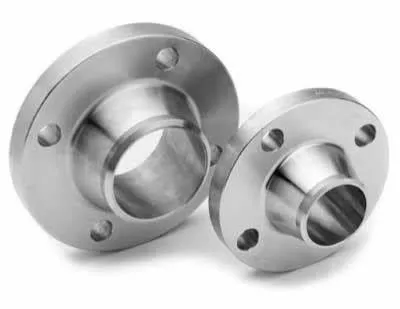-
Cangzhou Yulong Steel Co., Ltd.
-
Phone:
+86 13303177267 -
Email:
admin@ylsteelfittings.com

Dec . 09, 2024 15:12 Back to list
welding steel pipe together
Welding Steel Pipe Together Techniques and Best Practices
Welding is a critical process in various industries, particularly when it comes to the assembly of steel pipes. The ability to join pipes securely is essential for constructing pipelines, boilers, and pressure vessels, among other applications. This article delves into the techniques, benefits, and best practices for welding steel pipes together.
Understanding the Basics of Steel Pipe Welding
Steel pipe welding involves several techniques, each with its unique applications and advantages. The most common welding methods include Shielded Metal Arc Welding (SMAW), Gas Metal Arc Welding (GMAW), and Gas Tungsten Arc Welding (GTAW). Selecting the appropriate technique depends on various factors, including the thickness of the pipes, the positions of the weld, and the environmental conditions.
1. Shielded Metal Arc Welding (SMAW) Also known as stick welding, SMAW is favored for its versatility and ease of use. It employs a consumable electrode coated with flux which, when heated, provides a shield against oxidation and contamination. This method is effective for outdoor applications and can be used on rusty or dirty metal surfaces.
2. Gas Metal Arc Welding (GMAW) Commonly referred to as MIG welding, GMAW uses a continuously fed wire electrode and a shielding gas to protect the weld pool. This process is quicker than SMAW and produces cleaner welds, making it suitable for applications in industrial settings.
3. Gas Tungsten Arc Welding (GTAW) Also known as TIG welding, GTAW provides high-quality welds with excellent control over the weld puddle. It uses a non-consumable tungsten electrode and is ideal for thinner materials and when aesthetic weld appearance is crucial.
Preparing for Welding
Before commencing the welding process, it’s essential to prepare the steel pipes adequately. Proper preparation ensures strong, defect-free welds. Here are the key steps involved in the preparation phase
- Material Inspection Examine the pipes for any defects, including cracks, corrosion, or other forms of deterioration. Any compromised material should be replaced or repaired before welding.
welding steel pipe together

- Cleaning Remove any dirt, oil, rust, or mill scale from the areas to be welded. This can be achieved through mechanical cleaning methods like grinding or using chemical cleaners.
- Fit-up Ensure the pipes fit snugly together
. Employ clamps or jigs to maintain alignment and minimize gaps, which can lead to weaknesses in the joint.Welding Techniques
When welding steel pipes, it’s essential to follow specific techniques to ensure quality joints. Here are some best practices
- Tack Welding Begin by applying short welds at intervals to hold the pipes in place before completing the full weld. Tack welding helps align the pipes accurately and prevents distortion during the welding process.
- Control Heat Input Excessive heat can lead to warping or burning through thin-walled pipes. Carefully control the welding speed and amperage to maintain the correct heat balance.
- Welding Positions Depending on the configuration of the pipes, various welding positions (flat, horizontal, vertical, and overhead) may need to be employed. Each position has its challenges and requires specific techniques for effective execution.
- Post-Weld Treatment Once welding is complete, inspect the weld for any defects. Conduct non-destructive testing (NDT) techniques such as ultrasonic or radiographic testing to ensure there are no hidden faults. Depending on the requirements, post-weld heat treatment may also be necessary to relieve residual stresses.
Conclusion
Welding steel pipes together is an art and a science that requires skill, planning, and attention to detail. By understanding the various welding techniques and adhering to best practices, welders can create strong, durable joints that meet the demands of their specific applications. Continued training and adherence to safety standards further enhance not only the quality of the welds but also ensure the safety of the welding personnel. In a world where infrastructure relies heavily on efficient and safe pipeline systems, mastering the art of pipe welding is more important than ever. Whether in construction, agriculture, or manufacturing, the ability to effectively weld steel pipes is a vital skill that underpins many essential processes.
Latest news
-
ANSI 150P SS304 SO FLANGE
NewsFeb.14,2025
-
ASTM A333GR6 STEEL PIPE
NewsJan.20,2025
-
ANSI B16.5 WELDING NECK FLANGE
NewsJan.15,2026
-
ANSI B16.5 SLIP-ON FLANGE
NewsApr.19,2024
-
DIN86044 PLATE FLANGE
NewsApr.19,2024
-
DIN2527 BLIND FLANGE
NewsApr.12,2024
-
JIS B2311 Butt-Welding Fittings LR/SR 45°/90° /180°Seamless/Weld
NewsApr.23,2024
-
DIN2605-2617 Butt-Welding Fittings LR/SR 45°/90°/180° Seamless/Weld
NewsApr.23,2024











